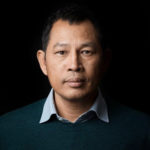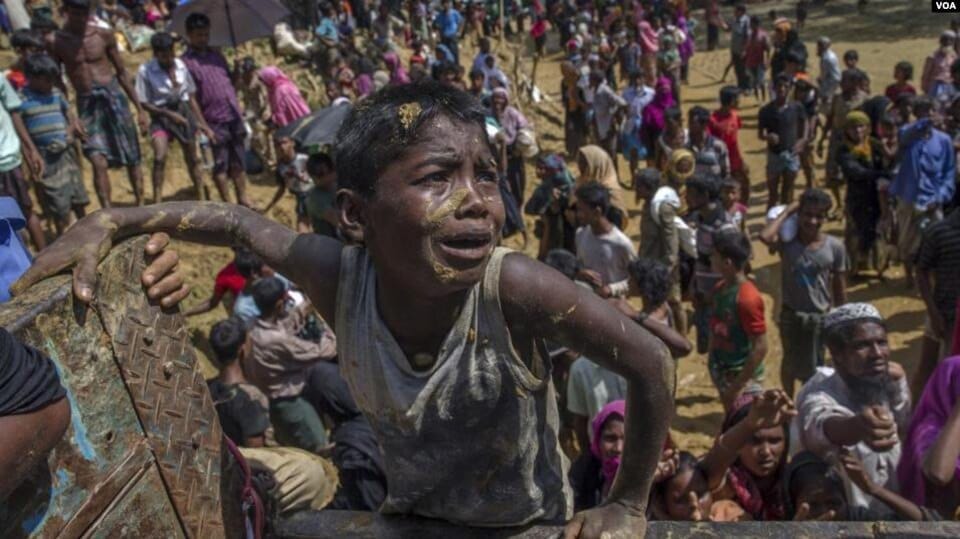Myanmar’s Youth & Rohingyas Die in the Country’s Multifront Conflicts and Ongoing Genocide
TRANSCEND MEMBERS, 17 Nov 2025
Maung Zarni | FORSEA – TRANSCEND Media Service
In the post-colonial period (since the country’s independence in 1948), Myanmar has been trapped in a vicious cycle of internal conflicts with political, commercial, ethnic and religious dimensions.
11 Nov 2025 – Myanmar’s various ruling elites and counter-elites have proven incapable of finding political solutions to fundamental political problems including ethnic equality, religious tolerance, respect for basic human and civil rights and a representative government. Additionally, Myanmar’s woes get further exacerbated by the meddling of powerful external actors, by they foreign governments and corporations, particularly extractive industries, or Asian neighbours with their own respective commercial, industrial and strategic interests.
Today’s youth in Myanmar, of all ethnicities and faith-based communities, are forced to abandon their dreams and aspirations of a peaceful country where they could chart their own life course. For the post-colonial civil war that began in March 1948 continues to rage on. Since the widely unpopular coup of February 2021, the war at home has both widened and deepened.
Many thousands of Myanmar’s young men and women have joined different revolutionary networks – 2,600 armed organizations, according to this documentary jointly produced by Al Jazeera English and Myanmar dissidents’ Burma VJ (video-journalists). A vast number of their peers, again both men and women, who had previously chosen not take up arms to fight the coup junta have fled the country in order to avoid forcibly mass-conscripted into the country’s military.
Watch the newly released: “War with the Junta: Exposing the hidden horrors on Myanmar’s battlefields I Al Jazeera Investigations”
Meanwhile, Myanmar’s genocide of Rohingya people has continued unabated.
The story of the capsized boat carrying 100 Rohingya genocide survivors, men, women and children, with another 200 missing on two other boats, in the Andaman Sea, hit today’s news headlines. But this has been a perennial catastrophe for the nearly 2 million Rohingyas (1.3 million in the refugee camps in Bangladesh and less than 500,000 inside Myanmar’s war-torn Rakhine state).
Needless to say, the Rohingya ethnic community that survived the 2016 and 2017 waves of genocidal violence in Western Myanmar continue to fare worst in the country’s un-ending wars and violence.
Because the conditions of life in Myanmar, as well as in refugee camps in Bangladesh, have been unbearable and/or totally unsafe and precarious, with no adequate access to food, livelihoods or education or no safety for them as Rohingyas, on land, thousands of Rohingyas attempt to get on rickety boats.
Undoubtedly, they and relatives in third countries pay large human trafficking networks large sums of money to escape Myanmar as their ancestral homeland turns hell on earth.
When states and armed groups take their land beneath these persecuted people, they will naturally risk their lives on high sea – in search of a more hopeful and safer future.
Video from Ro Yassin Abdumonab. “The lives of Rohingyas are in the forests and jungles where they go in search of better lives but they lose their lives on the way to their destination.”
Western organizations such as the wire news agencies and mass media, human rights watch dogs and the United Nations agencies and INGOs should stop adding insult to the injury of Rohingya genocide survivors by acknowledging them as genocide fleeing refugees, and stop falsifying them as “migrants” who are on “irregular migration”.
Watch FORSEA Co-founder Maung Zarni’s 5-minutes analysis of the latest Rohingya tragedy on the Andaman Sea on TRT World News on 10 November 2025.
___________________________________________
 A Buddhist humanist from Burma (Myanmar), Maung Zarni, nominated for the 2024 Nobel Peace Prize, is a member of the TRANSCEND Media Service Editorial Committee, of the TRANSCEND Network for Peace Development Environment, former Visiting Lecturer with Harvard Medical School, specializing in racism and violence in Burma and Sri Lanka, and Non-resident Scholar in Genocide Studies with Documentation Center – Cambodia. Zarni is the co-founder of FORSEA, a grass-roots organization of Southeast Asian human rights defenders, coordinator for Strategic Affairs for Free Rohingya Coalition, and an adviser to the European Centre for the Study of Extremism, Cambridge. Zarni holds a PhD (U Wisconsin at Madison) and a MA (U California), and has held various teaching, research and visiting fellowships at the universities in Asia, Europe and USA including Oxford, LSE, UCL Institute of Education, National-Louis, Malaya, and Brunei. He is the recipient of the “Cultivation of Harmony” award from the Parliament of the World’s Religions (2015). His analyses have appeared in leading newspapers including the New York Times, The Guardian and the Times. Among his academic publications on Rohingya genocide are The Slow-Burning Genocide of Myanmar’s Rohingyas (Pacific Rim Law and Policy Journal), An Evolution of Rohingya Persecution in Myanmar: From Strategic Embrace to Genocide, (Middle East Institute, American University), and Myanmar’s State-directed Persecution of Rohingyas and Other Muslims (Brown World Affairs Journal). He co-authored, with Natalie Brinham, Essays on Myanmar Genocide.
A Buddhist humanist from Burma (Myanmar), Maung Zarni, nominated for the 2024 Nobel Peace Prize, is a member of the TRANSCEND Media Service Editorial Committee, of the TRANSCEND Network for Peace Development Environment, former Visiting Lecturer with Harvard Medical School, specializing in racism and violence in Burma and Sri Lanka, and Non-resident Scholar in Genocide Studies with Documentation Center – Cambodia. Zarni is the co-founder of FORSEA, a grass-roots organization of Southeast Asian human rights defenders, coordinator for Strategic Affairs for Free Rohingya Coalition, and an adviser to the European Centre for the Study of Extremism, Cambridge. Zarni holds a PhD (U Wisconsin at Madison) and a MA (U California), and has held various teaching, research and visiting fellowships at the universities in Asia, Europe and USA including Oxford, LSE, UCL Institute of Education, National-Louis, Malaya, and Brunei. He is the recipient of the “Cultivation of Harmony” award from the Parliament of the World’s Religions (2015). His analyses have appeared in leading newspapers including the New York Times, The Guardian and the Times. Among his academic publications on Rohingya genocide are The Slow-Burning Genocide of Myanmar’s Rohingyas (Pacific Rim Law and Policy Journal), An Evolution of Rohingya Persecution in Myanmar: From Strategic Embrace to Genocide, (Middle East Institute, American University), and Myanmar’s State-directed Persecution of Rohingyas and Other Muslims (Brown World Affairs Journal). He co-authored, with Natalie Brinham, Essays on Myanmar Genocide.
Tags: Asia and the Pacific, Buddhists, Burma/Myanmar, Genocide, Muslims, Rohingya
DISCLAIMER: The statements, views and opinions expressed in pieces republished here are solely those of the authors and do not necessarily represent those of TMS. In accordance with title 17 U.S.C. section 107, this material is distributed without profit to those who have expressed a prior interest in receiving the included information for research and educational purposes. TMS has no affiliation whatsoever with the originator of this article nor is TMS endorsed or sponsored by the originator. “GO TO ORIGINAL” links are provided as a convenience to our readers and allow for verification of authenticity. However, as originating pages are often updated by their originating host sites, the versions posted may not match the versions our readers view when clicking the “GO TO ORIGINAL” links. This site contains copyrighted material the use of which has not always been specifically authorized by the copyright owner. We are making such material available in our efforts to advance understanding of environmental, political, human rights, economic, democracy, scientific, and social justice issues, etc. We believe this constitutes a ‘fair use’ of any such copyrighted material as provided for in section 107 of the US Copyright Law. In accordance with Title 17 U.S.C. Section 107, the material on this site is distributed without profit to those who have expressed a prior interest in receiving the included information for research and educational purposes. For more information go to: http://www.law.cornell.edu/uscode/17/107.shtml. If you wish to use copyrighted material from this site for purposes of your own that go beyond ‘fair use’, you must obtain permission from the copyright owner.
Join the discussion!
We welcome debate and dissent, but personal — ad hominem — attacks (on authors, other users or any individual), abuse and defamatory language will not be tolerated. Nor will we tolerate attempts to deliberately disrupt discussions. We aim to maintain an inviting space to focus on intelligent interactions and debates.


